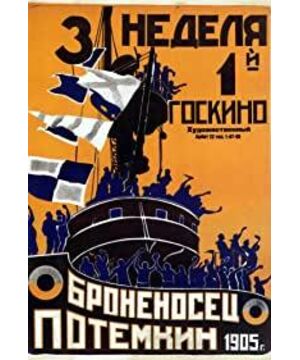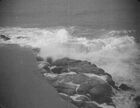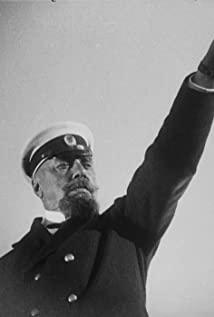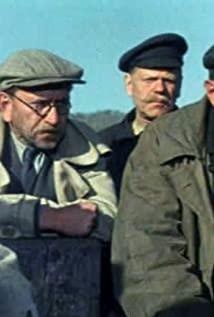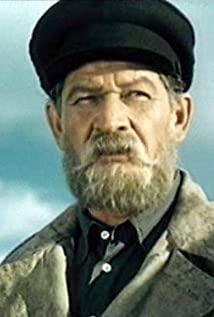Eisenstein is a Soviet director who developed montage and directed many famous films like The Battleship Potemkin, Ivan The Terrible. He was enthusiastically and actively supported the ideals of the October Revolution and also supported the Soviet Union. He was famous for using montage , and developed a theory of montage. The Battleship Potemkin was originally conceived from a series of celebrating the revolutionary films under a generic title called The year 1905. The film want to show the audience how fierce the dominance are, and show the power of woke up masses. Wong Kar-Wai is a Hong Kong Second wave director. He firstly studied design, then he studied film industry. Then he worked as a scriptwriter. In 1988, he directed his first film, As Tears Goes By, and was successful.And he directed In the Mood for love in order to show the audience some story from daily life and recreate the story in 60's. And this love story is under the rule restrictions. In this essay, comparing Wong Kar-Wai's In the Mood for Love and Eisenstein's Battleship Potemkin are utilized to analyze the film techniques. Eisenstein's film Battleship Potemkin is based around a fictional uprising that occurred during the 1905 Russian Revolution. In the final scenes, Eisenstein shot the Odessa Steps sequence which has become an exemplary example of his montage technique. Montage shots are edited together to create a story while a long take is a continuous shot that focuses on an object or people for a long time. This method introduced a faster and more engaging way to present a story.It broke with the hitherto traditional film form which was stable and simplified and replaced it with the quick rhythm of the montage, appealing to audience engagement with film. In the film's story, the masses came to port to welcome the sailors and the Battleship Potemkin. A man without legs is focused on in one shot while in another shot a mother is depicted in close-up. The camera switches from different people's without expressive faces in order to show that the masses support sailors. Suddenly, close-up to a woman wild hair symbolized the chaos begins. During this classical section, Eisenstein used mostly montage to worsen the tension. The close-up of guns and the long take crowd running away from the Odessa Steps in order to show how fierce the soldiers are. Then a boy was killed by guns, and fell down.The director used montage here to combine the boy dying scene and his mother horrible expression together and repeated four times in order to increase lens performance and glamorize the tragic atmosphere. Then the scene quickly changed between a schoolmistress, a woman with her baby in a pram , and the soldiers to cut in a montage. In order to routine more dramatic conflict, Eisenstein shoot the pram slowly slipped in a single lens of montage of attraction. And for the schoolmistress who aim to talk with the soldiers but finally sacrificed means that the The contradiction between the masses and the ruling class cannot be resolved within a peaceful way. At the end of the section of the Odessa steps, Eisenstein picked a group of stone line asleep, half-awake,roaring in the technique of montage intellectual in order to symbolized that the masses finally woke up and agreed that to have a revolution. In the section of An Appeal from the Dead, sailors display the Vakulincuk's remains to public in the tent of the port. Before that, he used an empty lens showing the peaceful sea surface in order to glamorize the atmosphere of sorrow. Then the masses found the remains in the tent and they decided to light up his candle and spontaneous surround the tent to cherish him. Here, Eisenstein use a fixed length take to show how people cherish the hero. During this scene, he arranged several nobles wearing gorgeous costumes to have a look at the remains then left in a hurry. Their curious and contempt expressions are in sharp contrast to the sorrowful atmosphere around the masses.Eisenstein used the long take to show that the masses and nobles in the same scene in order to strengthen the contrast. We can notice that the ruling class is just so cold-blooded. In the film of In the Mood for Love, the scene set in the restaurant as composed mostly using the technique of montage. We can notice that Chow and Su are nervous from their actions like when Chow is smoking his hands is shaking. Su is stirring a cup in an unnatural way. And in here we can notice that montage used here are mostly close up of actors expressions. They exchanged information about their partner's bag and tie's details, find out their partner was derailed. The section of Chow lived in a hotel and asked Su to find him is one of the most attractive sections of the film. Here,Wong Kar-Wai used a lot of short clips of Su wandering in the stairs up and down, her action is her mood reflection. She was confused and hesitant. Here use montage to combine these very short period of clips in order to make the audience feel how Su struggled between morality and love. The color of curtains and her clothes is red that symbolizing her emotional breakthrough of morality, so she finally determined to knock at his door. In the hotel room section, Wong Kar-Wai used slow long take to show how Chow and Su developed their love. This section is very interesting. Faces shows to the audience are all the reflections of the mirror. Although all these show a peaceful and happy atmosphere, the mirror always shows the illusory happy scenes. And in the section of their separate,Wong Kar-Wai used Long shot slowly moved from the red curtains to Chow's face and stay for a long time to shoot his sad expression in close-up. Wong Kar-Wai directed by arranging the scene(Mise en scène), the background is in dark which is contrast with the red curtain beside. These contrast colors highlighted how sorrow that Chow's expression look like. He makes the Chow in frame, shows that his heart is still restrained by morality also the red curtain symbolized his love to Su. This Long take stopped until he finally chooses to leave the room over, it has completely shown the his mood process from expectation to disappointment then ended on in his lonely back. When Su decided to follow Chow away from Hong Kong, her clothes turned green. Green is full of vitality, a symbol of life color.This suggests Su is determined to Chow and want to start a new life. However, when she arrived at the hotel, Chow has gone. The director uses fixed length take, represented the hope of green in the red curtains, red bed, dark red walls against the background, make the audience feel is a great loss. And compare the In the Mood for Love and the Battleship Potemkin, both of them using film techniques of montage and long take, easy to find it is a development progress. First, for Eisenstein is the director in the early time, his techniques for using montage and long shot look rough than Wong Kar-Wai's, for at that era the machine and the camera is behind nowadays. At this point, Wong Kar-Wai did better than Eisenstein .But at that time montage is still a new thing to films, and Eisenstein still did a important attempt of montage films,and developed a theory of montage. And for his montage using in The Odessa steps sequence of the Battleship Potemkin may well lay claim to being the most famous single sequence of images in the history of cinema. Both Wong Kar-Wai and Eisenstein use montage mostly is to accelerating rhythm of the film, and make the audience feel a sense of urgency. But Eisenstein places his own emphasis more on Montage of Attraction which is not in the logical framework of dramatic action inherent in static to reflect events, and the independent appeal free combinations chosen at random, to the audience, the impact of shock to the very means. And Wong Kar-Wai, for he is a director from East, he is more implicit in using montage, so he mostly using associative montage like shooting the clock, the news in television, symbolized that time flies.And for the long shot they used are mostly for Show a complete event and to glamorize the atmosphere. But Wong Kar-Wai is mostly with soothing slow motion and long shots to create a classic ambiguous atmosphere. The style is very nostalgic. Also, for Wong Kar-Wai is the Hong Kong wave director, he learnt more from the André Bazin's theory of long shot. And for the purposes of Wong Kar-Wai and Eisenstein is quite different. Just like Blake Nancy wrote on her book, "unfortunately for my purposes here, Hong Kong cinema often seems to be characterized by an absence of any political or ideological reference." Wong Kar-Wai is more interesting telling a love story during the difficult times, in order to show the audience how people struggle between love and morality. Nonetheless, for Eisenstein, he is totally a Soviet director.It was people like Eisenstein, who enthusiastically and actively supported the ideals of the October Revolution and provided propaganda to further to its ends, who also ended up digging their creative graves. Eisenstein relies on the theory of montage, even to the extreme. And the excessive use of montage theory causes defects in the film. Because of exaggerated and self-confidence of the montage effect, the director denied some important elements of other creation in the film, like the actor, script writing, try to only use clips to make , modify, adjust the whole movie thinking is one-sided. In addition, Eisenstein emphasizes the conflict between shots, thus ignoring the single shots of the interior space of expression, the lens inside the picture always in a plane, single state information.Part is assembling between scenes with no logical relation, unreasonable, and unable to connect with his audience, just to show and performance. Although both directors have a different style of using montage and long takes, they both use different styles and variety to lead development of the film, for the film is consists of both techniques in montages and long takes.
View more about Battleship Potemkin reviews


